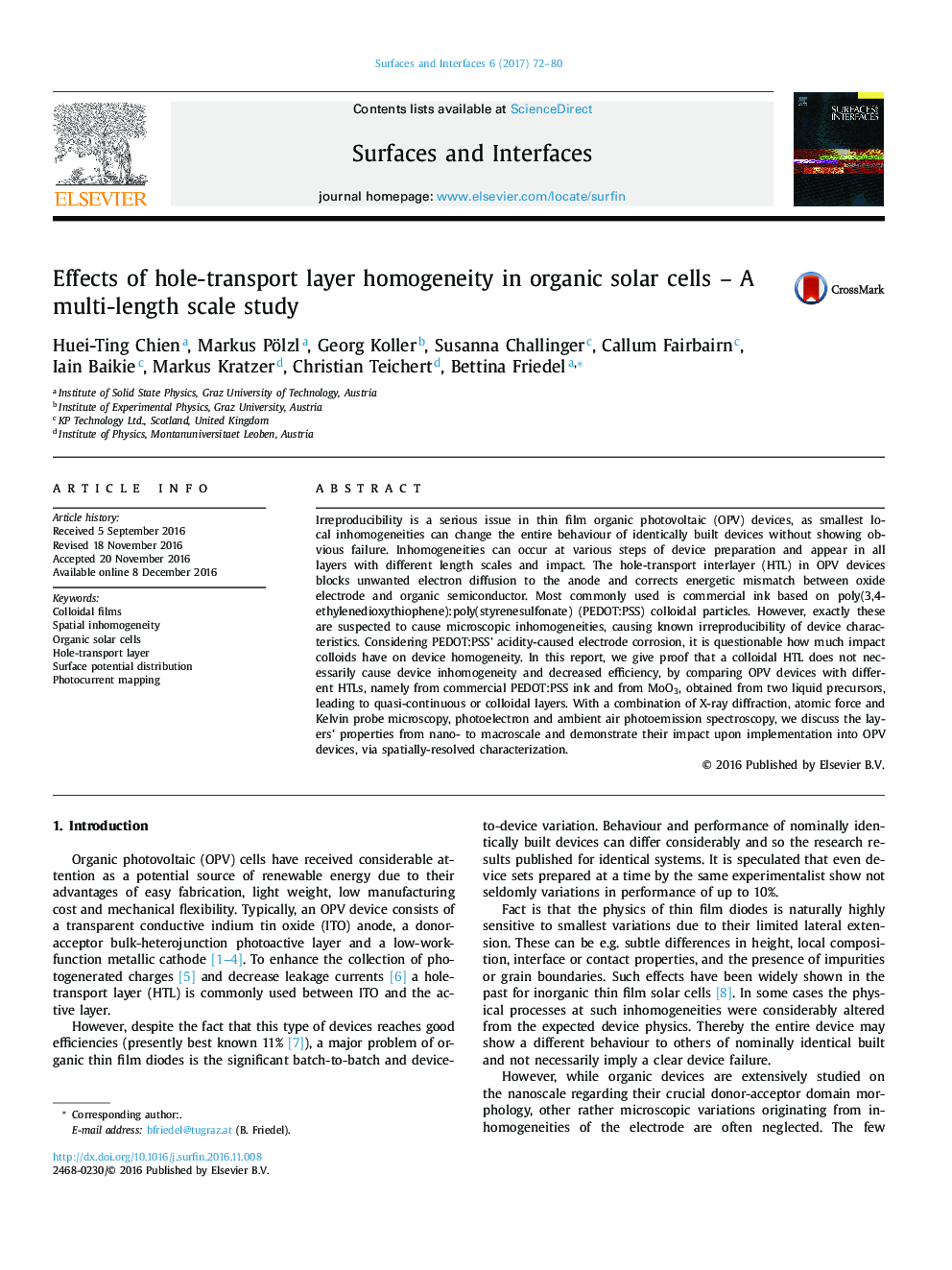| Article ID | Journal | Published Year | Pages | File Type |
|---|---|---|---|---|
| 4985587 | Surfaces and Interfaces | 2017 | 9 Pages |
Abstract
Irreproducibility is a serious issue in thin film organic photovoltaic (OPV) devices, as smallest local inhomogeneities can change the entire behaviour of identically built devices without showing obvious failure. Inhomogeneities can occur at various steps of device preparation and appear in all layers with different length scales and impact. The hole-transport interlayer (HTL) in OPV devices blocks unwanted electron diffusion to the anode and corrects energetic mismatch between oxide electrode and organic semiconductor. Most commonly used is commercial ink based on poly(3,4-ethylenedioxythiophene):poly(styrenesulfonate) (PEDOT:PSS) colloidal particles. However, exactly these are suspected to cause microscopic inhomogeneities, causing known irreproducibility of device characteristics. Considering PEDOT:PSS' acidity-caused electrode corrosion, it is questionable how much impact colloids have on device homogeneity. In this report, we give proof that a colloidal HTL does not necessarily cause device inhomogeneity and decreased efficiency, by comparing OPV devices with different HTLs, namely from commercial PEDOT:PSS ink and from MoO3, obtained from two liquid precursors, leading to quasi-continuous or colloidal layers. With a combination of X-ray diffraction, atomic force and Kelvin probe microscopy, photoelectron and ambient air photoemission spectroscopy, we discuss the layers' properties from nano- to macroscale and demonstrate their impact upon implementation into OPV devices, via spatially-resolved characterization.
Related Topics
Physical Sciences and Engineering
Chemical Engineering
Colloid and Surface Chemistry
Authors
Huei-Ting Chien, Markus Pölzl, Georg Koller, Susanna Challinger, Callum Fairbairn, Iain Baikie, Markus Kratzer, Christian Teichert, Bettina Friedel,
